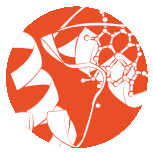
State of Sustainability Initiatives

As part of our ongoing work for the International Institute for Sustainable Development (IISD), we have worked on three State of Sustainability initiatives, providing copy editing, design, image sourcing and proofreading for the final reports, which appear both in print and online.
Sustainability initiatives like Fair Trade certification aim to help people make deliberate choices about the world they want to live in. Rather than search for esoteric and abstruse “context clues” in the packaging of their coffee to determine its potential negative socioeconomic impact, a consumer sees the “Fair Trade” label and understands that work has been done for them. It’s a simple system, one that can be simply undermined when the label is misapplied.
IISD takes on periodic reviews of sustainability initiatives such as Fair Trade. By interrogating the efficacy of these initiatives, they ensure the value of “Fair Trade” branding can’t supercede its social and ecological benefits, preserving consumer trust.
The 2014 report, Standards and the Green Economy, reviewed 16 standards operating in 10 sectors with a combined value of US$43.1 billion. The report explores the thriving adoption of these products to mainstream markets while cautiously forecasting potential consequences of overproduction.
In 2016, Standards and the Blue Economy examined nine seafood certification programs. The report overlays the market prevalance of sustainably sourced seafood (which in 2015 was up 13.5% from where it was in 2005) with the disparity between the countries that produce the most seafood overall versus the countries that produce the most sustainable seafood.
As part of our ongoing work for the International Institute for Sustainable Development (IISD), we have worked on three State of Sustainability initiatives, providing copy editing, design, image sourcing and proofreading for the final reports, which appear both in print and online.
Sustainability initiatives like Fair Trade certification aim to help people make deliberate choices about the world they want to live in. Rather than search for esoteric and abstruse “context clues” in the packaging of their coffee to determine its potential negative socioeconomic impact, a consumer sees the “Fair Trade” label and understands that work has been done for them. It’s a simple system, one that can be simply undermined when the label is misapplied.
IISD takes on periodic reviews of sustainability initiatives such as Fair Trade. By interrogating the efficacy of these initiatives, they ensure the value of “Fair Trade” branding can’t supersede its social and ecological benefits, preserving consumer trust.
The 2014 report, Standards and the Green Economy, reviewed 16 standards operating in 10 sectors with a combined value of US$43.1 billion. The report explores the thriving adoption of these products to mainstream markets while cautiously forecasting potential consequences of overproduction.
In 2016, Standards and the Blue Economy examined nine seafood certification programs. The report overlays the market prevalance of sustainably sourced seafood (which in 2015 was up 13.5% from where it was in 2005) with the disparity between the countries that produce the most seafood overall versus the countries that produce the most sustainable seafood.
The 2018 SSI report, Standards and the Extractive Economy, examines the mining industry, analyzing 15 sustainability initiatives related to aluminum, coal, copper, gold, iron, steel, conflict minerals, and sand, gravel and dimension stone. The report rigorously applies the IISD’s CARE analysis, scoring each initiative based on its coverage, assurance, responsiveness and engagement. Mining is a key industry in many countries-including Canada-but often produces many negative environmental, occupational and social impacts. Sustainability initiatives have great potential for managing and reducing these impacts, but we need to understand their strengths and weaknesses to ensure that we apply them efficiently and impactfully.
Branding: It’s not just for cookies and the Twitter accounts of fast food restaurants. It can be a useful socioeconomic tool, condensing complex ethical and ecological landscapes into something digestible for consumers who want to make a conscientious choice.

Sorry, the comment form is closed at this time.